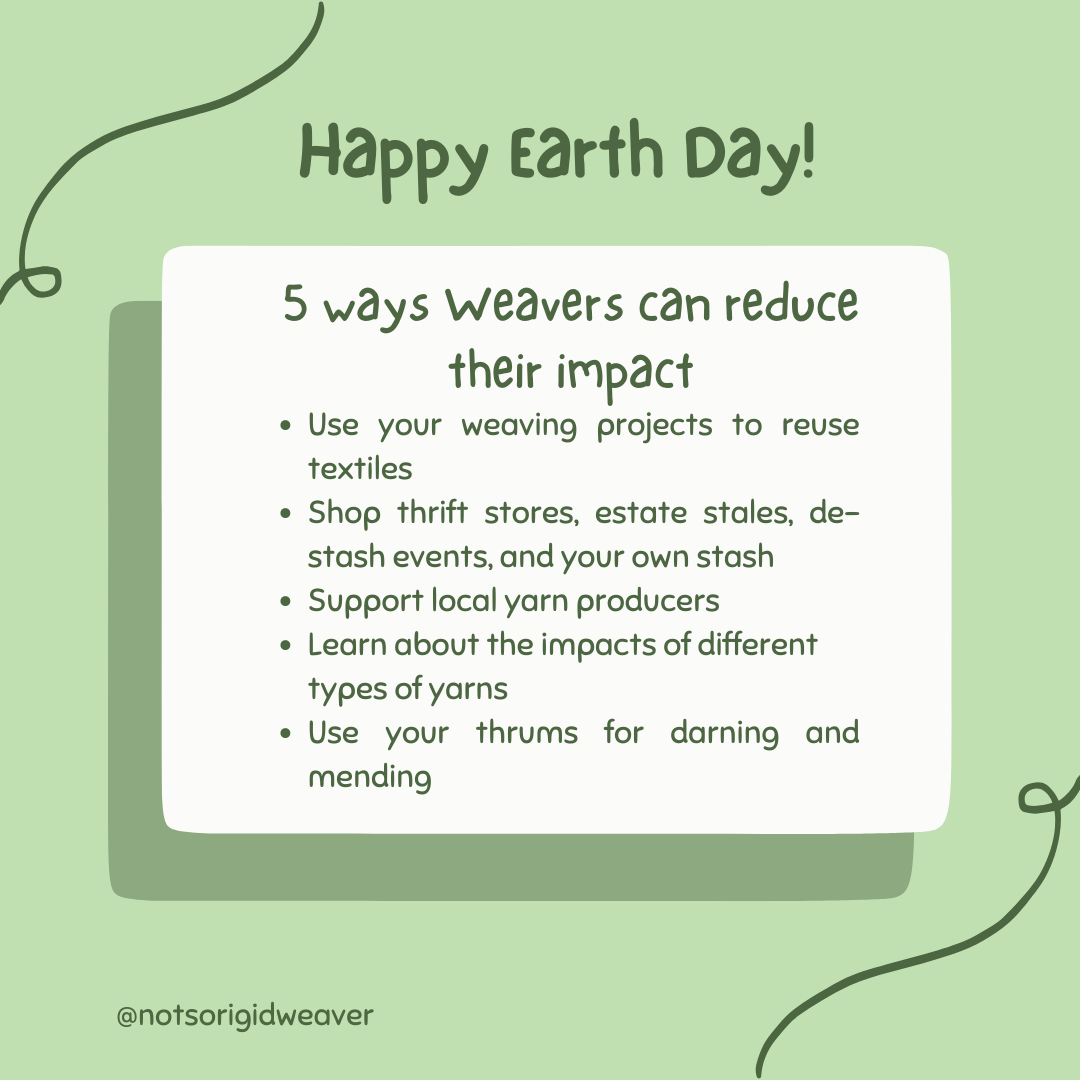A few thoughts on sustainability and textiles on Earth Day
sustainabilityToday is Earth Day!
I thought I’d take a moment to discuss the impact of textiles and the fashion industry on the environment.
The modern fashion industry, and in particular so called ‘fast fashion’, produces a massive amount of waste. Globally we produce about twice as much clothing as we did 20 years ago, and we probably had more than enough back then! Much of this clothing is made out of cheap synthetic fabrics which don’t decompose. Discarded clothing often ends up being shipped to Africa where some of it gets re-sold but much of it ends up in dumps there. The fashion industry is responsible for approximately 8-10% of global CO2 emissions, contributing more than aviation and shipping combined to climate change. And much of this is to produce low quality items that get worn a couple times before being discarded. What a waste!
The biggest problem is overconsumption of clothing, though some of this is driven by clothing that is very low quality to begin with that wears out quickly. The best way to reduce your impact is to take care of and repair the clothing you already have to extend it’s life, and, when you buy new things, buy second hand and/or higher quality items, or consider renting where appropriate (though relying on this for every day wear can add to shipping waste!). Visible Mending is a great trend (loom waste aka thrums makes great darning yarn!), and if you sew upcycling items can be another way to extend the life of fabrics while also being creative.
The most sustainable thing is the thing you already have!
To reduce your impact as a weaver, there’s many projects you can do to reuse textiles, particularly as weft. Old sweaters can be unraveled back into yarn, t-shirts can be cut into t-shirt yarn, and other fabrics can be used for rag weaving - I grew up with placemats made of denim strips woven by my grandmother. You can also get lots of yarn second hand at thrift stores, estate sales, and de-stash events. And shop your stash! Yarn you already have is more sustainable than new yarn.
You can also try to obtain more locally produced materials. Fibershed (or Fibreshed in some countries!) is an international movement that started in California promoting local textile systems and slow fashion. For example, here in Canada, our wool supply is very much under-utilized and many fleeces go to waste. It’s often easier to obtain local yarn than truly local fabric, but as a weaver you can make your fabric!
And take some time to learn about the environmental impacts of different fiber and dye types, and consider that when buying yarn - but no fiber is perfect, and it's also important to use a suitable fiber for the intended use case so that the item is actually used!

Personally, for clothing I am trying to buy fewer, high quality items that are as local as possible, and be conscious about my use of synthetic materials to where they provide the most benefit; for yarn I’ve taken advantage of some guild events to pick up some second hand yarn, and I try to support my local yarn producers as much as possible when I do buy new, and I’ve learned a lot about the environmental impact of rayon and decided to stick to Tencel within that family of yarns.
The more you make your own items the more you appreciate them!
Check out Not So Rigid Designer, the online weaving software for rigid heddle loom weavers!
